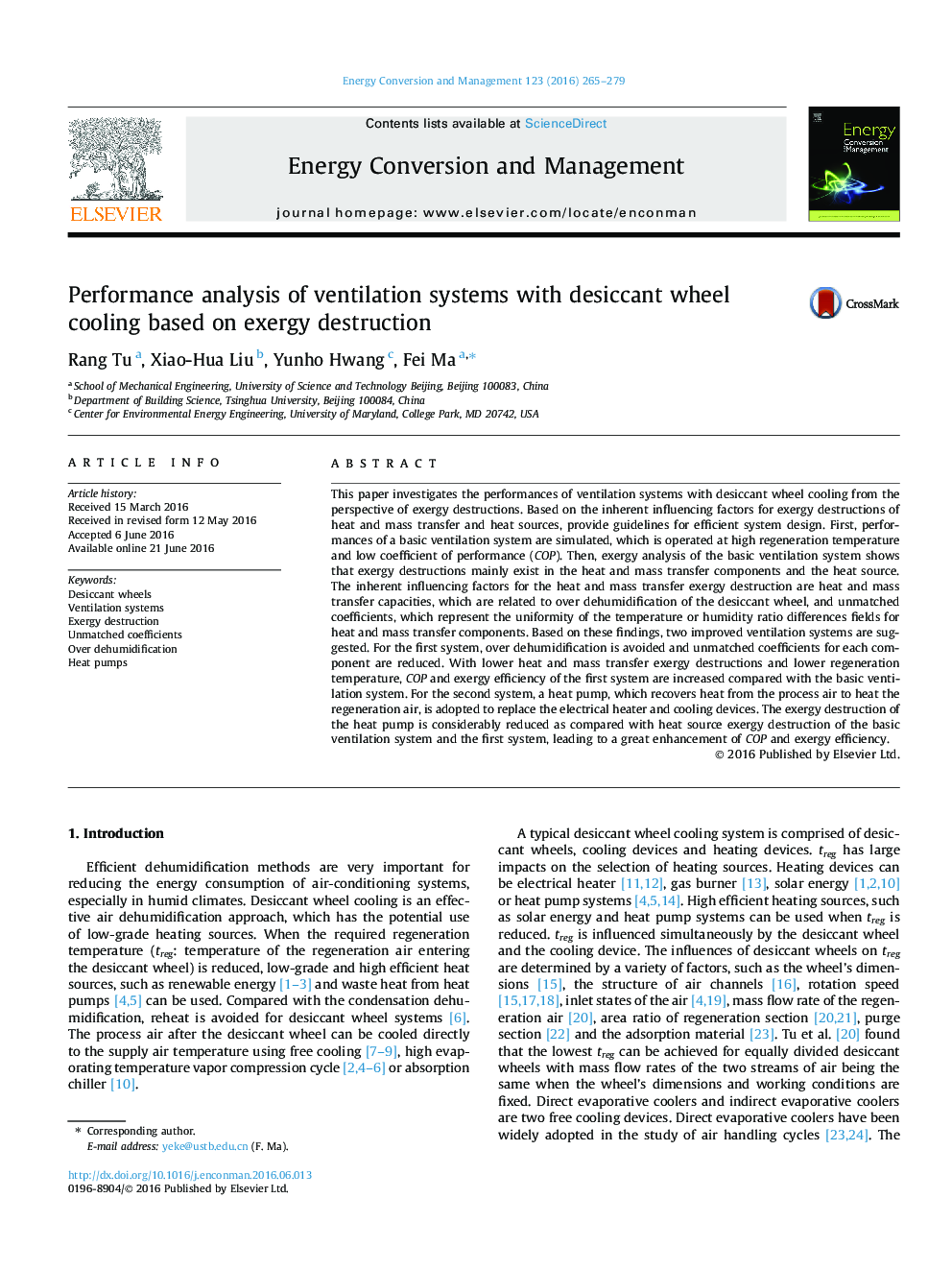| Article ID | Journal | Published Year | Pages | File Type |
|---|---|---|---|---|
| 760154 | Energy Conversion and Management | 2016 | 15 Pages |
•Ventilation systems with desiccant wheel were analyzed from exergy destruction.•Main performances influencing factors for ventilation systems are put forward.•Improved ventilation systems with lower exergy destruction are suggested.•Performances of heat pumps driven ventilation systems are greatly increased.
This paper investigates the performances of ventilation systems with desiccant wheel cooling from the perspective of exergy destructions. Based on the inherent influencing factors for exergy destructions of heat and mass transfer and heat sources, provide guidelines for efficient system design. First, performances of a basic ventilation system are simulated, which is operated at high regeneration temperature and low coefficient of performance (COP). Then, exergy analysis of the basic ventilation system shows that exergy destructions mainly exist in the heat and mass transfer components and the heat source. The inherent influencing factors for the heat and mass transfer exergy destruction are heat and mass transfer capacities, which are related to over dehumidification of the desiccant wheel, and unmatched coefficients, which represent the uniformity of the temperature or humidity ratio differences fields for heat and mass transfer components. Based on these findings, two improved ventilation systems are suggested. For the first system, over dehumidification is avoided and unmatched coefficients for each component are reduced. With lower heat and mass transfer exergy destructions and lower regeneration temperature, COP and exergy efficiency of the first system are increased compared with the basic ventilation system. For the second system, a heat pump, which recovers heat from the process air to heat the regeneration air, is adopted to replace the electrical heater and cooling devices. The exergy destruction of the heat pump is considerably reduced as compared with heat source exergy destruction of the basic ventilation system and the first system, leading to a great enhancement of COP and exergy efficiency.
